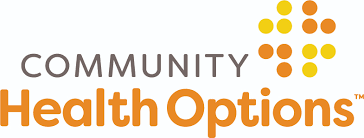The amount of substance abuse treatment admissions for prescription pain reliever abuse* rose sharply – from 2.2% to 9.8% – between 1998 and 2008, a federal report recently showed us. And Maine made the very top of the list for having the highest percentage of residents being treated for painkiller addiction.
According to t he Substance Abuse and Mental Health Services Administration (SAMSHA) report, 386 of every 100,000 residents age 12 or older were admitted for treatment of painkiller addiction in Maine in 2008 – more than eight times the national rate of 45 per 100,000 people.
he Substance Abuse and Mental Health Services Administration (SAMSHA) report, 386 of every 100,000 residents age 12 or older were admitted for treatment of painkiller addiction in Maine in 2008 – more than eight times the national rate of 45 per 100,000 people.
It is interesting to note that the Treatment Episode Data Set (TEDS) showed that pain reliever abuse increased about the same across all educational level and employment status categories. Women have shown higher percentages of pain reliever abuse, rising from 3.5% in 1998 to 13.3% in 2008. Men increased from 1.8% to 8.1% over the same period. Crossroads for Women has seen a steady increase in admissions for addiction to prescription drugs over the years, coming in second only to alcohol as clients’ primary drug of choice.
There has been some discussion this past week over why Maine is at the top of the painkiller treatment list in the media, online and amongst treatment professionals. In a Portland Press Herald article, Dr. Mark Publicker, an addiction medicine specialist at Mercy Recovery Center, talks about how the states with the higher rates of addiction are also the markets where OxyContin was first introduced. Some of the themes we have heard here at Crossroads include increased accessibility of prescription painkillers like OxyContin (both on the street and from doctors), the myth that “if a doctor prescribed it then it must be good for me” and the lack of money available for prevention and treatment of prescription drug abuse within the state of Maine.
Why do you think Maine tops the list for treatment for painkiller addiction? We’d love to hear from you.
Sources
Maine plagued by painkiller habit (Portland Press Herald article)
Substance Abuse Treatment Admissions Involving Abuse of Pain Relievers: 1998 and 2008 (study)
New study shows dramatic shifts in substance abuse treatment admissions among the states between 1992 and 2007 (SAMSHA press release)
*According to the study, prescription pain relievers refer to drugs such as hydrocodone, oxycodone, morphine, and other drugs with morphine-like effects; heroin and nonprescription methadone were excluded from the study.

















